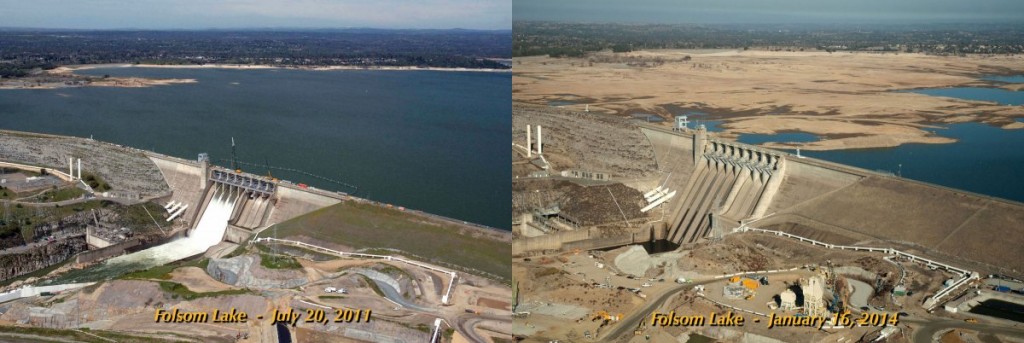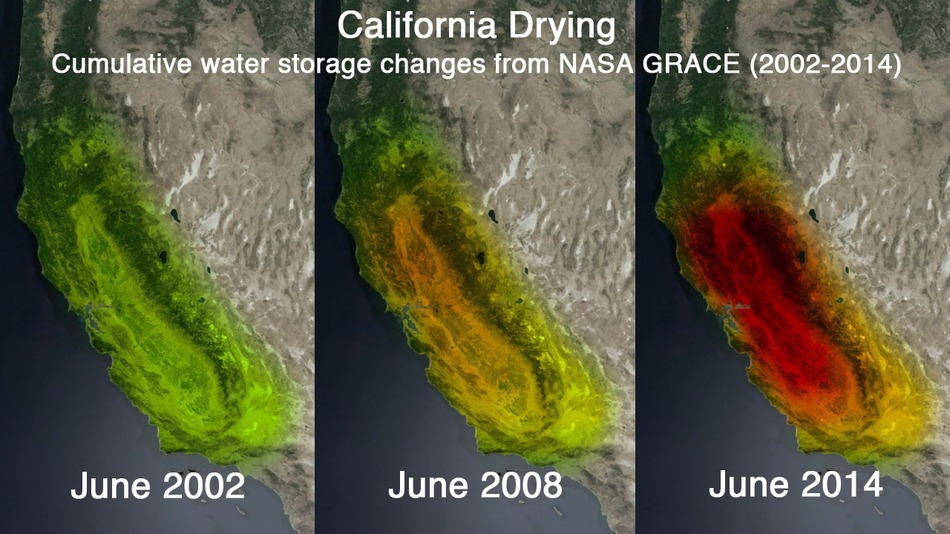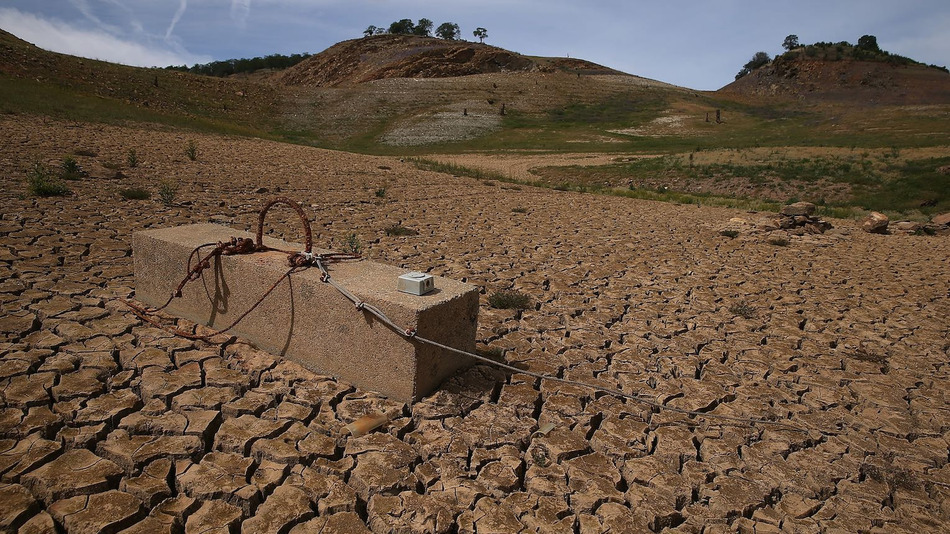In another symptom of California’s severe drought, vast areas of the state’s Central Valley are sinking faster than in the past as huge amounts of groundwater are pumped, a recent NASA study stated. In some places, the ground is sinking nearly two inches each month, putting surface infrastructure at growing risk of damage.
Sinking land has occurred for decades in California thanks to excessive groundwater pumping during drought, but NASA’s new data shows that it is happening faster now. The report stated that the land mass near Corcoran sank 13 inches in eight months, while part of the California Aqueduct sank eight inches in four months last year. Long-term sinking has destroyed thousands of public and private groundwater well casings in the San Joaquin Valley. Over time, it can permanently reduce the underground aquifer’s water storage capacity. Scientists used satellite images of the Earth taken over time to measure the sinking land.
This problem is causing the buckling of irrigation canals’ walls, damaging pipes, creating giant sinkholes and causing cracks in homes. Despite the fact that the water in these wells – which are now 2,500 feet deep – is thousands of years old, the water is desperately needed to nourish the fruits, vegetables and nuts grown in California, which supply more than half of the country, according to another report from the CBS network.
“It is one of those long-term, slow and cumulative impacts,” said Jeanine Jones, interstate resources manager at the Department of Water Resources. “The thing we’re especially concerned about is the damage, long-term damage, to water infrastructure. Over time, that diminishes the ability to move water.”
Subsidence has been a recurring problem in the San Joaquin Valley, the more arid southern half of California’s heavily farmed Central Valley. In one example that became legendary among groundwater experts, an area near Mendota sank 28 feet between 1925 and 1977. The issue largely abated with the advent of California’s massive man-made plumbing system, which showered the Valley with an abundance of surface water from Northern California. But in recent years, as the Sierra snowpack has dwindled and fresh water supplies have diminished, the woes have returned with a vengeance.
“Roads can be broken by fissures, pipelines have been exhumed, and the slope of the land can be altered, changing drainage patterns,” the NASA researchers wrote.
California’s vast, natural aquifers were formed by rain and melted snow that percolated into the soil over thousands of years. When water is extracted in huge volumes, and there’s insufficient rain to replace it, the earth gradually sinks.
The rate of subsidence underscores how quickly underground aquifers are being drained. A report earlier this week by UC Davis said farmers are pumping an additional 6 million acre-feet of groundwater this year, compared to 2011, the year before the drought started, to compensate for shortages in deliveries of surface water from the State Water Project and the federal government’s Central Valley Project.
Experts say subsidence will make it harder to replenish the aquifers once the rains come. That’s because subsidence effectively compacts the soil, making it harder to store water underground.





